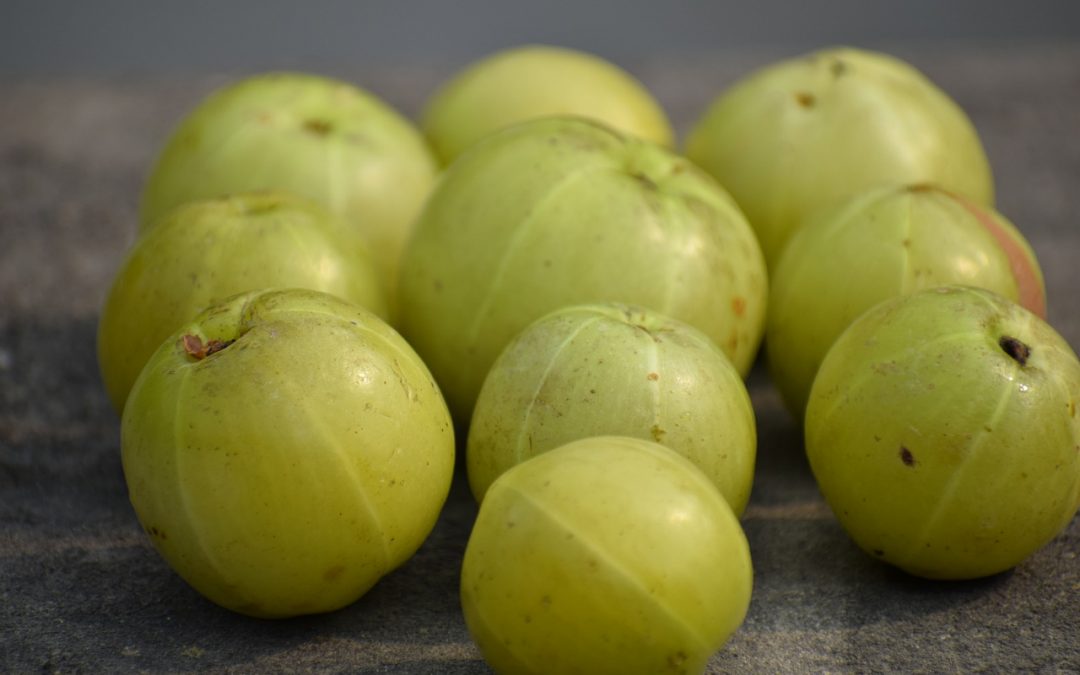I recall eating Indian gooseberries (amla) the summer I spent 2 months in Mumbai, India. I was in search of them after reading study after study of the benefits of this true super-fruit. My cousin-in-law, Tushar, brought some to me and (after thoroughly washing) I popped one little gem into my mouth – not knowing what to expect in terms of taste. It gushed slightly sour, mostly sweet, and very currant-like. They were tasty, and I would eat them solely for taste if I had access to the fruit; but Indian gooseberries are not easily found in the US in fresh fruit form. They are now sold as an extract, juice, dried, salted, pickled, sweetened jam (Chyavanprash), and frozen forms throughout the US – from Indian grocery stores. You can visit or order online. Indian gooseberries (amla) should not be confused with other gooseberries from other part of the world.
Many amla eaters are seeking out this fruit for the numerous benefits.
- Anti-stress & anti-aging properties
- Anti-artery-clogging properties
- Anti-cholesterol properties
- Heart protective properties
- Treating cancers
- Preventing cancers
- Blood-glucose management
- Anti-fever properties
- Anti-pain properties
- Osteoarthritis therapy
- Anti-anemia properties
- Anti-diarrheal properties
- Wound-healing properties
- Stomach-protective properties
- Liver-protective properties
- Kidney-protective properties
- Nerve-protective properties
- Anti-cough properties
In terms of treating and preventing cancer, amla has been shown not only to kill cancer cells but leave normal cells alone. This was tested with 6 human cancer cell lines: lung, liver, cervical, breast, ovarian, and colon. Post-study It was suggested to research amla as a possible chemo-preventative agent.
In terms of blood-glucose management, just ½ teaspoon of dried amla was as effective as Rx medication.
Some people don’t like the taste of amla, but desire the health benefits – so they may use the dried powder version and cover up the taste with cacao (chocolate) or other fruits and create a superfood smoothie. Many Indian people use the Ayurvedic amla jam, called Chyavanprash. There are Ayurvedic detox products that include amla juice or amla extracts. So there are ample ideas of incorporating amla into your daily routine. Remember that before you change your diet to discuss the change and reasons for the change with your doctor, who would be more knowledgeable about your particular bio-individuality.



